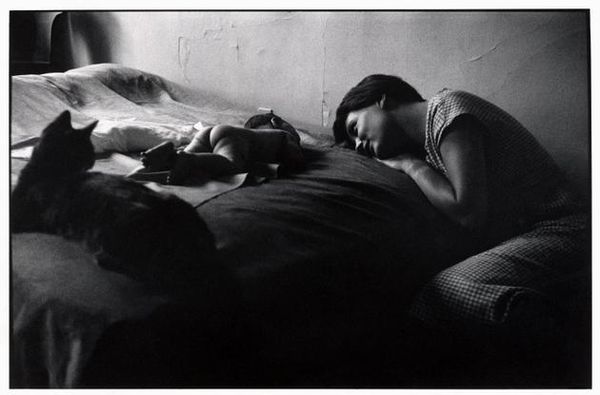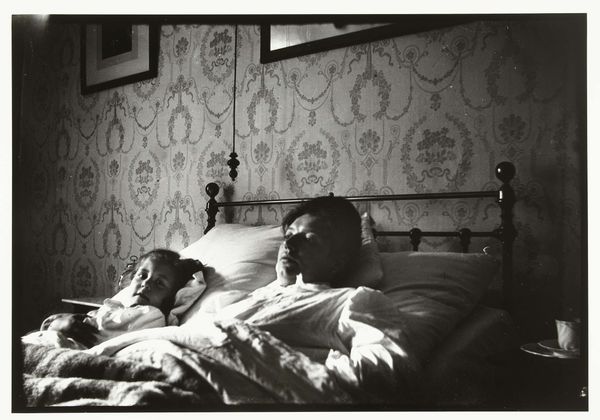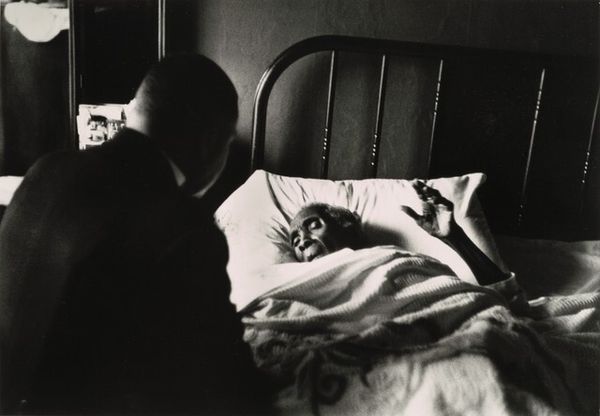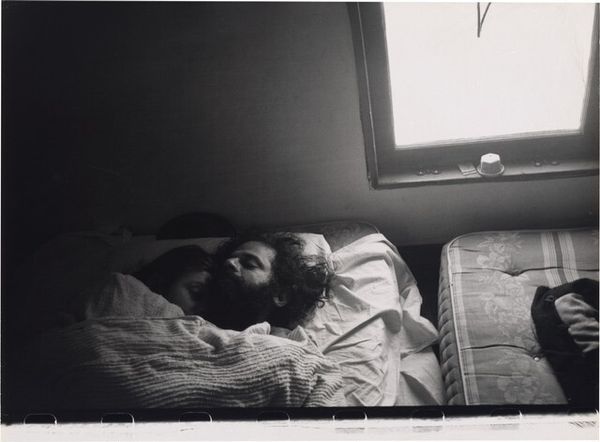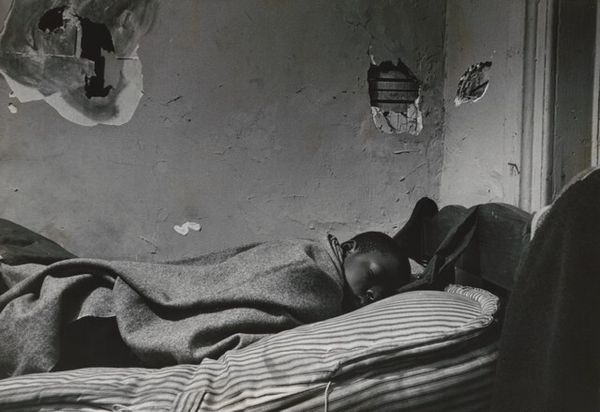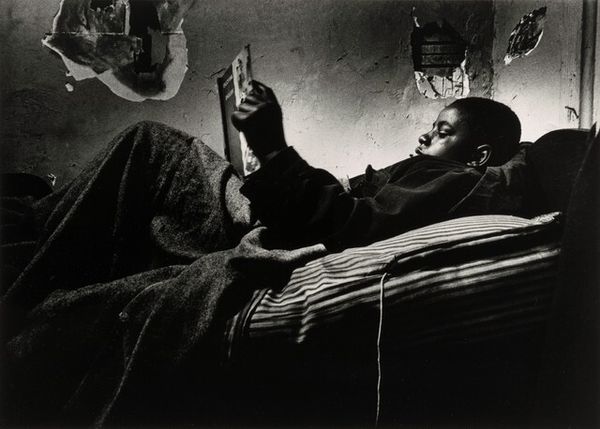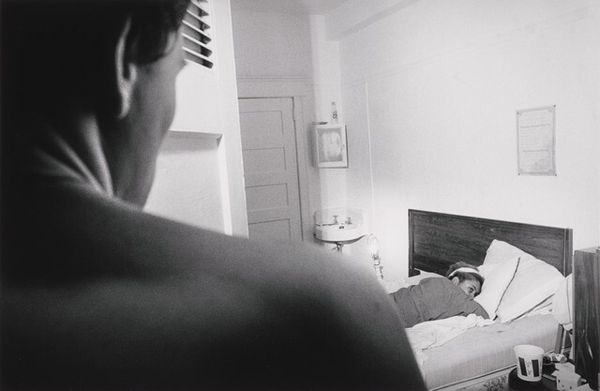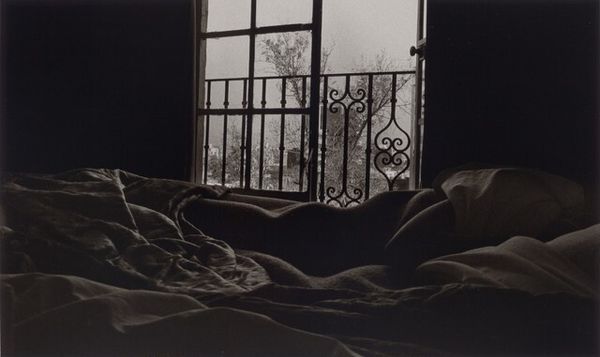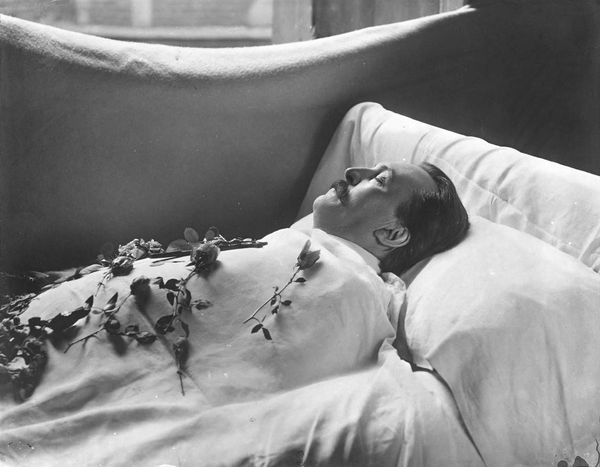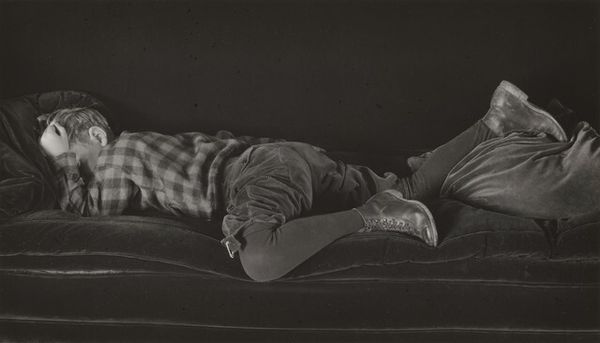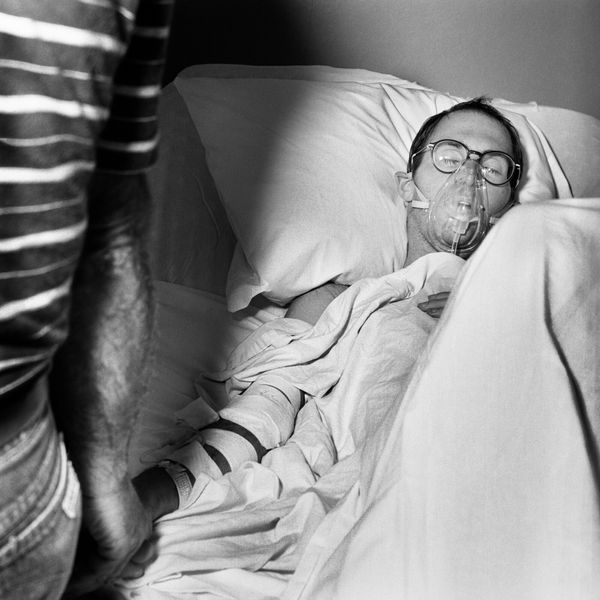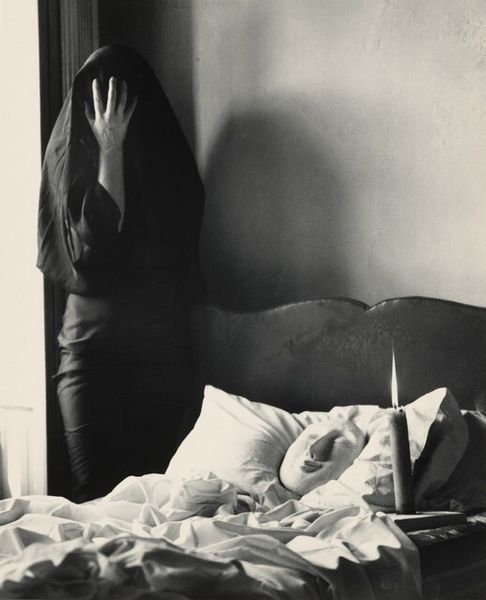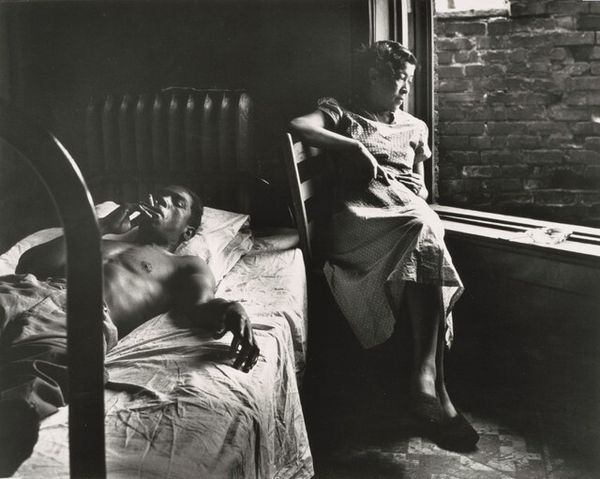
photography
#
portrait
#
black and white photography
#
street-photography
#
photography
#
black and white
#
monochrome
#
realism
Dimensions: sheet: 35.4 × 27.7 cm (13 15/16 × 10 7/8 in.) image: 32.4 × 21.8 cm (12 3/4 × 8 9/16 in.)
Copyright: National Gallery of Art: CC0 1.0
Editor: Jim Goldberg's "Marcos (in bed)," possibly taken between 1987 and 1994, presents a very intimate black and white photograph. The setting is stark, and the subject appears contemplative. I’m drawn to how the images on the wall almost tell a story of their own above the main subject, framed above Marcos as he lies in bed. What stands out to you in this piece? Curator: It's precisely that layering that grabs my attention. We see photography here used not only as a means of representation, but also as a process embedded in Marcos's daily life. Goldberg documents the lived reality through the photo itself. The very materiality of the photo – the silver gelatin print, the texture of the paper – becomes a marker of a specific time and place, indexing a material reality. Notice how those framed photographs are themselves arranged almost haphazardly, reflecting a working class mode of display rather than one of traditional curated art. Editor: That’s interesting, so you’re suggesting the means of display contributes to our understanding? How the photo as a physical object participates in communicating a specific experience? Curator: Precisely! Think about the labour involved – the taking of the picture, its development, the arrangement within the bedroom. Goldberg uses this chain of production, highlighting social class and lived experience through the tangible materials of the image, in its production, use, and how its viewed and displayed.. Editor: So, beyond the subject, it's about the photo as a manufactured object within Marcos's environment? That's a perspective I hadn't considered. I was focusing primarily on portraiture at first glance. Curator: Absolutely! Seeing how a photograph is constructed and circulated shapes our engagement as much as the content within its frame. Editor: That really changes my perspective. Thanks. I now realize how critical the relationship between art and lived experience becomes evident through a Materialist analysis. Curator: Indeed. It opens up conversations that bring to the forefront power structures around what gets considered “art”, where labor becomes integral.
Comments
No comments
Be the first to comment and join the conversation on the ultimate creative platform.
